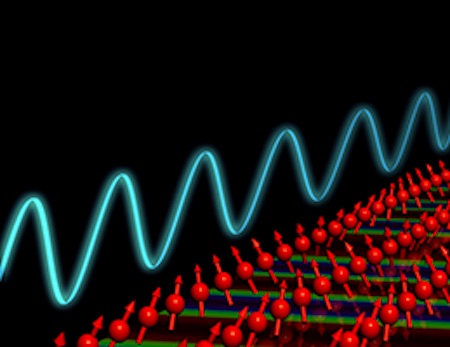In condensed matter, collective excitations are fictitious entities that do not center around individual particles, but involve a cooperative, wave-like motion of many particles simultaneously. As such, collective excitations express the paradigm of the many-body problem. Typical examples include modes of atomic vibrations (“phonons”), spins (“magnons”), and electronic excitation energy (“excitons”). Revealing the dynamics of these modes has important fundamental implications because collective modes give access to the strength and spatial distribution of interactions and correlations. At the same time, collectivity lies at the origin of various macroscopic quantum phenomena in solids, and can thus mediate transformations, instabilities, and phase transitions. Besides their fundamental relevance, collective excitations also hold promise for future technological applications, especially in relation to energy sciences, health sciences, data storage, and signal processing: the goal is to engineer novel devices where collective modes can be efficiently generated, manipulated, and detected, similarly to what occurs in electronics with the electrons and in photonics with the photons.
 In our group we develop advanced techniques to reveal the dynamics of collective modes and capture new details of the quantum world. Depending on the energy, symmetry, and momentum of the target collective modes, we employ frequency- or time-domain photon-based spectroscopies covering a specific spectral range (from the terahertz to the X-rays). We are especially interested in collective modes of exotic origin that emerge upon spontaneous symmetry breaking in quantum materials. Representative examples include the modes of quantum condensates (e.g., Higgs, Leggett, Bardasis-Schrieffer modes), various forms of excitons in compounds with charge/spin/orbital order, and electromagnons in multiferroics.
In our group we develop advanced techniques to reveal the dynamics of collective modes and capture new details of the quantum world. Depending on the energy, symmetry, and momentum of the target collective modes, we employ frequency- or time-domain photon-based spectroscopies covering a specific spectral range (from the terahertz to the X-rays). We are especially interested in collective modes of exotic origin that emerge upon spontaneous symmetry breaking in quantum materials. Representative examples include the modes of quantum condensates (e.g., Higgs, Leggett, Bardasis-Schrieffer modes), various forms of excitons in compounds with charge/spin/orbital order, and electromagnons in multiferroics.
We also aim to realize an exquisite level of control over the collective modes that lie at low energy by driving them into a coherent state with ultrashort laser pulses. In this respect, we manipulate coherent phonons to dynamically change atomic structures and tailor material functionalities, and we launch coherent magnons to achieve all-coherent switching of magnetic domains. Our studies encompass a vast range of quantum materials, ranging from bulk solids to van der Waals moiré heterostructures.
Selected publications:
